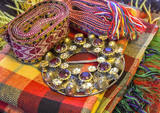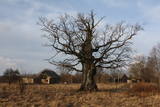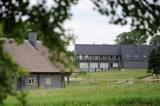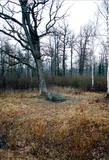| Нo | Название | Описание |
|---|---|---|
|
Atrodas Riekstusalas pussalas galā. No tā labi pārskatāma aizaugušā Kaņiera ezera ziemeļu un austrumu daļa. Izcila putnu vērošanas vieta. Pie torņa atrodas viena no retajām Latvijas kadiķu audzēm. Turpat meklējams Kaņiera ezera niedru laipas (uz pontoniem) sākums. |
||
|
В орденском замке в Пайде на Валлимяэ основан историко-познавательный центр Wittenstein, где роль машины времени исполняет лифт, который перевозит посетителей из одной эпохи в другую. На разных этажах можно познакомиться с доисторической и орденской, королевской и царской, оккупационной и эстонской эпохами и временем восстановления независимости. В историко-познавательном центре много звуковых и световых эффектов, видео и кино-программ. |
||
|
Творческая ткацкая мастерская Мареты Петровичи, где рождаются яркие суйтские ткани, проводятся мастер-классы. Здесь можно приобрести сделанные на месте сувениры. Тем, кто хочеть принять участие в мастер-классах, следует записаться заранее. |
||
|
Небольшое населенное место со школой, библиотекой и магазином. К северу от Видале видны остатки ветряной мельницы. Направляясь в сторону Рижского морского залива, дорога пересекает обрыв Шлитерских Синих гор, откуда в безлиственный период открываются восхитительные виды и обнажения песчаника. Слева виден источник Синих гор - благоустроенное место для забора воды. Дорогу, ведущую из Видале в сторону Мелнсила, местные жители называют Клипелдамбой. Она, как будто бы была построена немецкой армией во время Первой мировой войны, устанавливая на дороге кругляки и засыпая их гравием. |
||
|
Находится к югу от Екабпилса, в северо-восточной части песчано-гравийного карьера Раджу (водохранилище Раджу). Интересно, что камень найден во время разработки карьера. Камень Раджу оценивается как второй по величине валун Латвии (объем ~ 100 м3). В северной части карьера создан Екабпилсский лесопарк – популярнейшее место для прогулок, отдыха и занятий спортом горожан. В 2012 году пляжу водохранилища Раджу присвоен «Голубой флаг». |
||
|
Предприятие «Ранкас пиенс» было основано в 1996-м году. На предприятии производят ~ 80 продуктов переработки молока – сыр, творог, сметану, сливки, кисломолочные продукты, десерты и др. Одно из пяти латвийский предприятий, которые имеют право производить традиционный продукт, включенный в схему «Гарантированной традиционной особенности» ЕС – сыр «Яню». Продукцию можно приобрести в магазине „Rīmaļnieks”, находящемся рядом с предприятием. |
||
|
Алсунгская гончарная мастерская расположена в здании музея и действует уже с 2009 года, показывая, как создаются различные керамические изделия из глины. Здесь вы можете поработать с глиной сами или понаблюдать за процессом создания керамических изделий – начиная с гончарного круга и до перехода к заключительной стадии – покрытию глазурью. |
||
|
Farm is located ~1 km to the north of Puikule near to the former Limbazi railway, in the territory of North Vidzeme Biosphere Reserve. The farm breeds sheep of the Latvian dark-head breed from which wool, hats, scarves, souvenirs etc. are made by felting. They can be purchased in the farm. Sheep graze in nearby meadows, thus promoting plant diversity in the area. About the role of pets in maintaining biodiversity can also be read on the bench in the yard. In the barn house is a collection of household items. Visitors can take a guided tour and buy souvenirs. |
||
|
The Krimulda Castle was built in the latter half of the 13th century. It was located where the right bank of the ancient Gauja River valley is split by the deep Vikmeste ravine. The castle was owned by the council of archbishops from Rīga, and it was an impressive structure with a large interior courtyard and a defensive wall that was 1.5 m thick. The Swedish military blew up the castle when retreating in 1601. Today the castle hill is forested, and only a small fragment of the castle wall can still be seen. It is near the ruins that you will find the Sigulda aerial tram and the Krimulda serpentine road – the only object of its kind in the Baltic States. |
||
|
This is the thickest European wild apple tree in Latvia. It is just lovely when it is blossoming.
|
||
|
Saimniece piedāvā sertificēta pirtnieka pakalpojums, organizē latviskos pirts rituālus, vada izglītojošas programmas par augu spēku izmantošanu savai labsajūtai. Apvienojot pirtnieka pakalpojumus un pašas ražoto produkciju, saimniece radījusi zīmolu - “Arnitas labsajūtu darbnīca”. Kā mājražotāja piedāvā pašceptu maizi, zāļu tējas un augu sīrupus, kā arī meistardarbnīcas kulinārā mantojuma jomā. |
||
|
The Volkenberga Castle was built in the 13th century by the Livonian Order, and it was practically impregnable, as it was on top of Mākoņkalns hill. These were among the first fortifications in Latgale, and only fragments of the castle remain today. Architect Pēteris Blūms has said that this was a special type of fortification. Legends say that after the lord and lady of the castle died, the property was divided up among their three daughters – Roze, Lūcija and Marija. Each sister built a new castle on the land which she inherited – Roze built Rēzekne, Lūcija built Ludza, and Marija built Viļaka. A memorial plaque at the foot of Mākoņkalns hill recalls the visit which pre-war Latvian President Kārlis Ulmanis paid to Latgale in 1938. |
||
|
Lauku viensēta ar 8,9 ha lielu teritoriju atrodas Alītas rajonā, netālu no Simnas pilsētas pie gleznaina Atesio ezera Atesninki ciemā.100 m attālumā no ūdens ierīkots viesu nams ar 70 gultas vietām. Piemērota svinību un konferenču rīkošanai līdz 100 personām. Iespēja pašiem gatavot ēst, jo aprīkota ar plašu virtuvi. Lauku sēta radīta gan aktīvai, gan mierīgai atpūtai. Ir basketbola un volejbola laukumi, bērnu rotaļu laukums, dārzs, zvejas būdas, grilla vieta. Bezmaksas izmantojami 4 ūdens velosipēdi, kanoe vai koka laivas. Pirts patīkamai laika pavadīšanai. |
||
|
Маршрут ведет по природному парку «Излучины Даугавы», который в восьмидесятых годах прошлого века хотели затопить, построив Даугавпилсскую ГЭС. Центральной артерией природного парка является древняя долина Даугавы. Особенность Даугавы – восемь больших излучин реки, протяженность которых составляет 4 – 6 км. Наибольшую высоту берега реки достигают в т.н. «Воротах Даугавы», где возвышаются крутые и мощные Верверский и Слутишкский обрывы. Более половины территории занимают леса, подходящие для походов и наблюдения за природой, сбора ягод и грибов. Долина Даугавы – одна из флористически богатейших в Латвии. Здесь произрастают более 800 видов растений. Это край мультинациональной среды, где сплелись традиции латгалов, литовцев, поляков, русских и белоруссов и их наследие. Одно из излюбленных туристических мест – деревня Слутишки, единственная такого рода в Латвии. Maršruta informācija no Latvijas Lauku foruma |
||
|
Mожно попариться в паровой бане, понаблюдать за процессом доения коров и даже поучиться этому самому, купить свежевыпеченный хлеб, булочки и уникальный яблочный чай, взять в аренду семейную палатку, поучаствовать в разных подсобных работах и научиться им, половить рыбу и искупаться в пруду, пострелять как из старинного, так и из современного лука. |
||
|
This territory was established to protect the lovely central section of the Neries River, local species, and Lithuania’s largest oak forest.
|
||
|
Первые сведения о святом источнике в Тирзе относятся к середине 18 века, однако источник использовался значительно раньше. После омовения или забора воды источнику оставляли пожертвования. В первой половине 19 века барон Тирзе и церковь начали борьбу с этой языческой традицией, однако не очень успешно. Над источником возведен навес, и люди по сей день приезжают к нему за водой. |
||
|
The tour takes through all three Baltic States – Lithuania, Latvia and Estonia. The route visits the capital cities and some of the most attractive cities and towns in Mid - Baltics. The tour starts in Vilnius, the capital city of Lithuania. Kaunas is the second largest Lithuanian city, standing at the confluence of the Nemunas and Neris Rivers. Riga, the capital city of Latvia, offers a variety of cultural experiences and entertainment. Sigulda is famous for its landscapes and medieval castles. Cēsis is one of the most charming towns in Latvia with many attractions ranging from medieval heritage to nice restaurants, exhibitions and festivals. Valmiera offers art galleries, museums, nature trails and Valmiermuža beer from the famous local brewery. Tartu in Estonia is a university town, with some very popular tourist attractions such as the interactive AHHAA science centre, the largest in Baltic countries. Finish the tour in Tallinn – the capital city of Estonia. Tourist information centres in cities and towns will help you with maps, information on sights, attractions and guided tours, food, shopping and public transport. |
||
|
The Forest Trail leads down from the highest point of the Haanja Upland. The most important sight on this route is the Suur Munamägi Hill – 318 m above sea level. The highest point of the Baltics with its observation tower provides its visitors with a splendid 50 km range view of the Estonian nature. The 150 year-old western taiga spruce forests grow on the slopes of Suur-Munamägi. Further on the trail circles around the southern part of Lake Vaskna, and continues down small country roads surrounded by solitary homesteads and small clusters of farms. The route ends in a small village, Tsiistre, where the Linen Museum is located. The museum has a collection of folk linen. Flax is one of the oldest cultural plants in Estonia and a few decades ago, blue flax fields were a common sight in southern Estonia. |
||
|
Крестьянское хозяйство и дом выходного дня на холмистом ландшафте Видземе, в 35 км от Цесиса. Изготавливает сертифицированные биологические мармеладные конфеты со вкусом ржаного хлеба и другими добавками, выпекает формованный ржаной хлеб, готовит хлебный квас, ржаное тесто для имбирных пряников. Занимается изготовлением украшений и другими видами рукоделия. Продукцию можно приобрести. |
||






























